Growing up in Thailand, there was one kind of food that made it to every single dinner in our household: stir fries. That’s because they are fast, easy, and incredibly versatile. Here's the important part: if you know the basic principles of stir frying, you can make a good stir fry with any ingredients you have on hand; and that is what you'll learn in this article. And once you know the basic stir frying technique, you can be creative and have more fun!
The Plan: First we will cover "the structure" of stir fries and some ingredient options, then we will talk through the techniques.
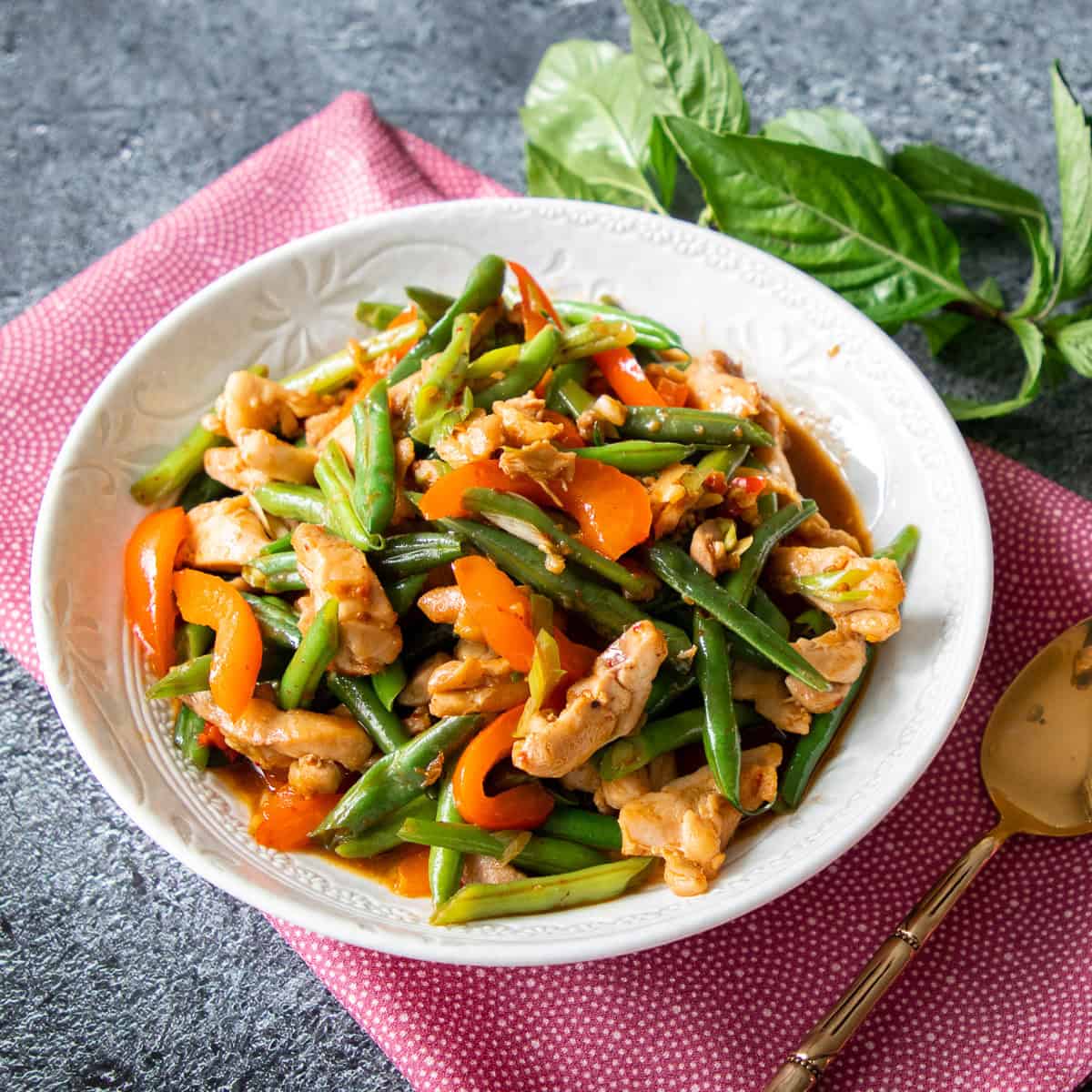
Want to save this recipe?
Jump to:
Watch The Video
If you prefer to watch rather than read, most of the information I include in this blog post is also covered in the video, and the technique section will be more easily understood visually via the video!
The Structure of Stir Fries
This is the important mindset shift: once you start thinking about stir fries in terms of its structure instead of seeing different stir fries as different recipes, you can stir fry anything. There are 3 major components to any stir fries:
1. The Nuggets: Proteins and Veggies
"The nuggets" is my term for all the chunky pieces in your stir fry; basically the proteins and the vegetables. Most people are stuck thinking that they need a mix of protein and veggies to make a stir fry, but it doesn’t have to be. It can be an all veggie stir fry like my cabbage fish sauce stir fry, or gailan oyster sauce stir fry - or it can be an all-meat stir fry like my grandma’s garlic shrimp stir fry, or garlic pepper chicken.
For proteins: Chicken, pork, beef, shrimp, fish, tofu, you name it, it’s all stir-fryable. Leftover proteins are great and make it easy cuz it’s already cooked, such as in my black pepper beef recipe where I use leftover cut-up steak.

For veggies, absolutely anything works. ANYTHING is stir-fryable. Even things you don’t associate with stir fries, like cucumber - which is great in stir fries - and also romaine lettuce!

Important Tips for Preparing Proteins for Stir Frying
- The chewier the protein, the thinner the pieces should be. Pork and beef should always be sliced between ⅛ - ¼ inch (3-5 mm) thick. Chicken can be cut around ½ -inch (1.25 cm) thick. And fish should be kept in big 1-inch chunks at minimum.
- Always slice pork and beef against the grain. If you're starting from steaks where the meat grain runs up and down, cut the steak into 1-inch-wide pieces, then turn it on its side so the grain now runs left-to-right - and you can now slice thinly against the grain.
- Preventing fish from falling apart. Choose fish that is firmer and thicker, such as salmon and halibut, and cut them into big chunks; at least 1-inch thick. Pre-sear the fish pieces so they are about 80% done, or even 60% if using fish that can be eaten medium such as salmon. Then briefly toss them in at the end just to coat them in the sauce. You can also dredge fish chunks in flour and deep fry them before tossing into stir fries at the end - this is a restaurant trick for preventing fish from falling apart.
- Tofu. Use firm, extra firm, or pressed tofu for stir frying. If using pressed tofu, such as the one I used in pad thai, you don't need to fry it as it is very sturdy. If using firm or extra firm, it should be fried or air-fried to prevent crumbling and to create chewiness. You can also use frozen tofu which is sturdy and can absorb sauce better. See this post all about the science of frozen tofu and how to use them in dishes.
1. The Sauce
Once you’ve decided on the big stuff (the nuggets), now we think about the sauce. The main job of the sauce is to bring taste elements into the dish. Note I said taste not flavour. The 5 tastes are: sweet, salty, sour, umami and bitter; although bitter is not really a part of most stir fries so we will leave that out for this discussion. Let’s break these down:
Salty - An element every dish needs

This is non-negotiable. You NEED something salty in your stir fry (or any dish, really). Some common options are: soy sauces of all kinds, fish sauce, oyster sauce, fermented soybean pastes (Thai taojiew) or miso, shrimp paste, salt, or anything else salty you can think of. You can use just one, like in my cabbage fish sauce stir fry, or a combination of a few which is more common in Asian stir fries.
Sweet - The salt balancer, or the star

Sometimes you'll want the sweetness to be the star of the dish, like in sweet and sour stir fry, but more commonly you want just a liiiiiitttle bit of sweetness to balance the salt, such as the little bit of sugar in my mixed veggies stir fry. Or maybe something in between. It depends on the flavour profile of the dish - and is something you, the chef, have to decide upon.
In terms of ingredients, white sugar is great if you’re using just a small amount, but if sweet is a prominent flavour, then palm sugar, brown sugar, sweet soy sauce, maple syrup, honey, etc. will bring in more complexity. Note that Thai chili paste aka chili jam would also fall into the sweet category, but it’s also bringing in a lot of other great flavours as well, such as in my cashew chicken recipe.
Sour - Maybe you want it, maybe not.

Unlike salty, sour is not a taste that every stir fry needs. Like sweet, it depends on what you’re going for, though it is used much less frequently than sweet.
If you do want an element of sour, you can use vinegar, like in my sweet and sour stir fry, or tamarind paste, like in my tamarind shrimp recipe, or even vinegary hot sauce such as sriracha as in my cucumber chicken stir fry recipe.
Lime juice and lemon juice are less common in stir fries, but if you're gonna add them it’s best to add them at the end as they taste better when they’re not cooked in high heat.
Other Sauce Ingredients
There are other sauce ingredients that don't offer any taste but bring on lots of flavour (remember taste and flavour are not the same thing). Things like sesame oil, coconut milk, or even chicken stock.
Pro Tip: Make sauce in bulk
If you’ve got a favourite stir fry, say cashew chicken, you can make 10x of the cashew chicken sauce and now you won't have to make it from scratch every time. Most stir fry sauces will last indefinitely in the fridge.
Also check out my Universal Stir Fry Sauce that you can make in bulk and use to stir fry anything including fried rice and noodles. This is something I learned working at Thai restaurants where they'd have a vat of this sauce and it goes into almost every stir fry that they make!
3. Aromatics

You could make a stir fry with just the nuggets and the sauce, but every good stir fry has aromatics. They're what give complexity to the dish. Aromatics include anything you’d call a herb or a spice. This can be as simple as chopped garlic, but you can also add shallots, chilies, black or white pepper, onions, lemongrass, basil, cilantro, or even curry paste. The possibilities here are endless.
The Technique - 5 Steps to Great Stir Fries
Now that we have the structure, let's talk technique. While everything will be written down, this part is better understood visually, so I highly recommend you watch the video tutorial where I show you two different stir fries using recipes that require slightly different treatment.
These steps are not Thai cuisine specific; you can use these techniques with any ingredients from any cuisine. But there are a few other techniques that are unique to other cuisines, or more common to restaurant cooking, that we won’t get into here.
Okay, my basic stir frying technique is done in 5 steps:
Step 1: Cook the meat separately.

I first sear the meat in a hot wok until browning develops on the underside. Then I toss and stir the meat until it's cooked through, then remove from the pan. If your meat is already cooked, like leftover proteins, you can obviously skip this step.
Why cook the meat separately? You don't have to, but I like to do it because it gives me control over meat "doneness". If you add the meat in raw with everything else, how long the meat spends in the pan is tied up with how long other things take to cook, and you might then overcook the meat. You also won't get any browning if you don't sear it separately, and browning is flavour!
Tip: I always ensure the meat is marinated so that the seasoning isn’t just in the sauce around the meat but IN the meat as well. A simple fish sauce or soy sauce marinade is fine.
Step 2: Sauté Non-Delicate Aromatics

In the same pan you used to sear the meat, add more oil if needed, then sauté any aromatics that are not leafy and don't "wilt". That's your garlic, onions, shallots, chilies, curry pastes, etc. Use medium heat at this stage as aromatics can burn easily.
Give the aromatics a couple of minutes to cook and infuse their flavour into the oil, and then the oil will carry the flavour of the aromatics into the rest of the dish. This is why we don’t just throw garlic in midway; the flavour wouldn't have a chance to permeate the whole dish.
If using garlic, once the smallest bits of garlic turn golden, that's your cue for Step 3.
Step 3: Stagger-add vegetables and sauce

The longest-cooking veggie goes in now, and give them a good toss in the heat and the oil, then add the sauce (which I always have mixed up in advance so that I only have to add 1 thing). In this example I'm using the sauce from my Chili Paste Stir Fry recipe.

If you’re using different types of vegetables that take different amounts of time to cook, stagger-add them accordingly. For example, if you like bell pepper crisp, add them after the beans are almost done.

If a certain vegetable takes a long time to cook, add a splash of water then cover the pan and let it steam. Come back a minute before it's done. If you're not sure how long it takes, keep poking it with a fork every minute or so to check. In this example I'm making the kabocha squash stir fry recipe.
Okay once your veggies are done, we go to Step 4
Step 4: Add the protein back in

Your pre-cooked protein goes back into the pan to be tossed in the sauce. If your protein is fully cooked and is still hot, it just needs to be tossed for a few seconds. If you are using cold leftover protein from the fridge, be sure to give it enough time to heat through.

If using eggs, they can go in at this step; and let them set a bit before scrambling so that they remain in chunks (best to see this technique in the video).
Step 5: Off the heat and ddd delicate aromatics

Now is the time for any leafy aromatics like basil and green onions to go in, and which I add off-heat so they don't wilt too much. For suuuuper delicate herbs that wilt very easily in heat like cilantro, you can even add them after plating. I always add them off-heat because the residual heat is more than enough to wilt the herbs without over-cooking everything else.
And that is how you stir fry anything!
What about fried rice?
Fried rice is also a kind of stir fry, or what Thai people call a pad. Generally, the same steps still apply, with a few modifications:
- Treat rice like vegetables. Add them in at step 3, after aromatics but before the sauce. The sauce should be drizzled over the rice as the liquid from the sauce will help the rice grains separate.
- If adding eggs to fried rice, add the eggs in after the aromatics and before the rice. Scramble the eggs and then add the rice.
- Allow the rice to toast. For good fried rice, you want the rice to toast and brown slightly to develop a deeper flavour. After the rice is well mixed with the sauce, let it sit undisturbed over high heat for 15-20 seconds to allow the rice to brown, then flip and repeat a few more times. Timing for how long to let the rice sit each time will depend on the strength of your stove, so a bit of trial and error is required.
What about noodle stir fries?
Noodle stir fries are harder to generalize because different kinds of noodles require different techniques. Step 1 (meat) and Step 2 (aromatics) are gonna be consistent, but from that point onward it kind of depends which noodles you're using.
My advice is to learn how to work with each kind of noodle separately. So if you want to learn how to stir fry fresh rice noodles, start by learning a pad see ew recipe, or for dry rice noodles learn an easy pad thai recipe, or for egg noodles, learn my mie goreng recipe.
Once you’ve mastered that, you can start generalizing the technique and change out ingredients. Keeping in mind of course that different ingredients may require different treatments, so you gotta use some critical thinking here.
FAQ: The Best Cookware for Stir Frying
If you want to stir fry with any regularity at all, I suggest you get a wok, and it'll change your stir frying life.
Why wok? Because with a wok you can actually STIR and toss to your heart's content without worrying about things jumping out. Yes, you can stir fry with a large skillet, but it's so much more difficult to try to toss, flip, and stir without having things escape the pan.
If you need to use a skillet, make sure it is LARGE (12-inch at least) and I recommend you practice the "pan toss" - i.e. flipping things in a skillet without utensils - because that will allow you to toss and mix things more quickly and efficiently.
But...what kind of wok?
The best kind of wok is a whole other discussion, and it really depends on your specific needs. If you are a casual stir-fryer who just wants to stir fry with ease and convenience, Korean, flat-bottom, nonstick woks are a great, low-maintenance option. They also come in a few sizes to match your storage needs. That's what I use at home often where convenience is a priority. You can get them at most large Asian grocery stores, and definitely at H-Mart.
If you want to get serious with stir fries, and you want to get that smoky wok char and use max-high heat, you'll want to get yourself a carbon steel wok. It comes with some special maintenance however and are generally pretty big if you only have limited space.
For further discussion:

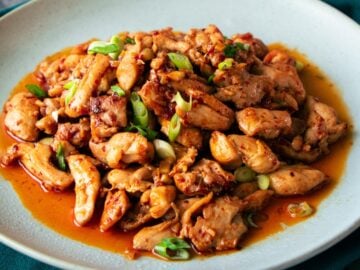
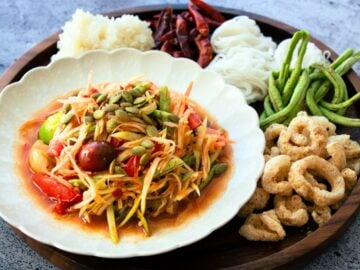
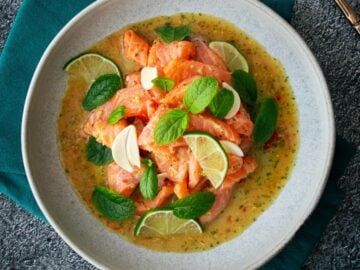
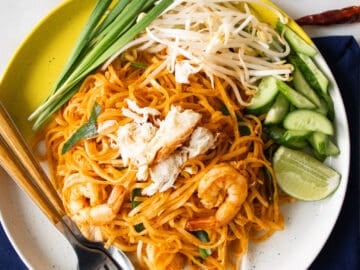

Roland says
Thank you very much! So detailed information combined with that much love for cooking! It is great pleasure!